Wednesday, January 24, 2018
Casco Viejo and the Panama Canal Railway
We began our day with the complimentary breakfast at Pips, an omelette for me and pancakes for Tom, with fresh orange juice and cafe con leche. It was very good, and were done by 10:00.
This morning we took a self-guided walking tour of the historic colonial neighborhood in which we were staying, Casco Viejo (meaning Old Town), located on a peninsula in the southwest part of Panama City, built here for the protection offered by the sea, and surrounded by defensive walls. Panama City was rebuilt at this site after the original city was burned down during an invasion by the English privateer Henry Morgan in 1671.
The French stayed in Casco Viejo when they made their attempt to build the Panama Canal in the 1880s, so naturally there's French architecture here with balconies reminiscent of the French Quarter of New Orleans. A UNESCO World Heritage Site, Casco Viejo is in the midst of a transformation, with some structures having been restored and others still crumbling.
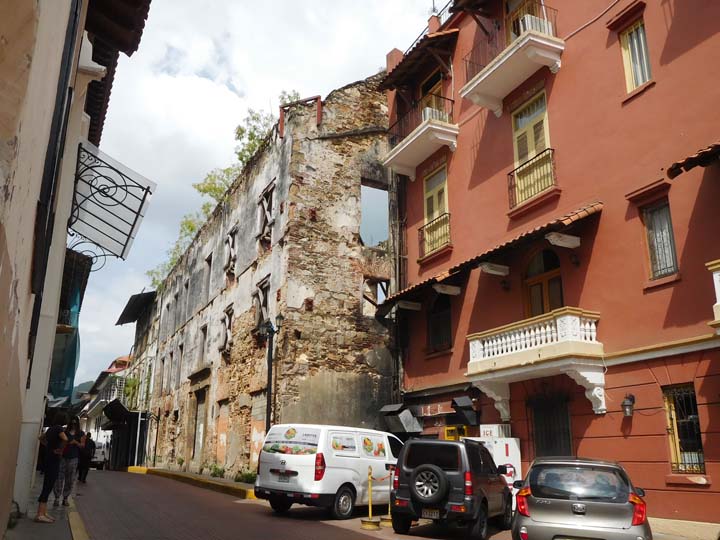
Casco Viejo, pre- and post-restoration
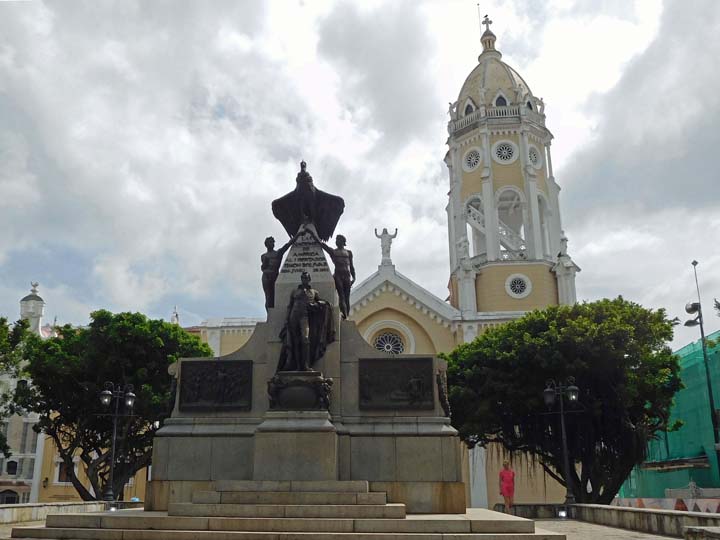
Plaza Mayor
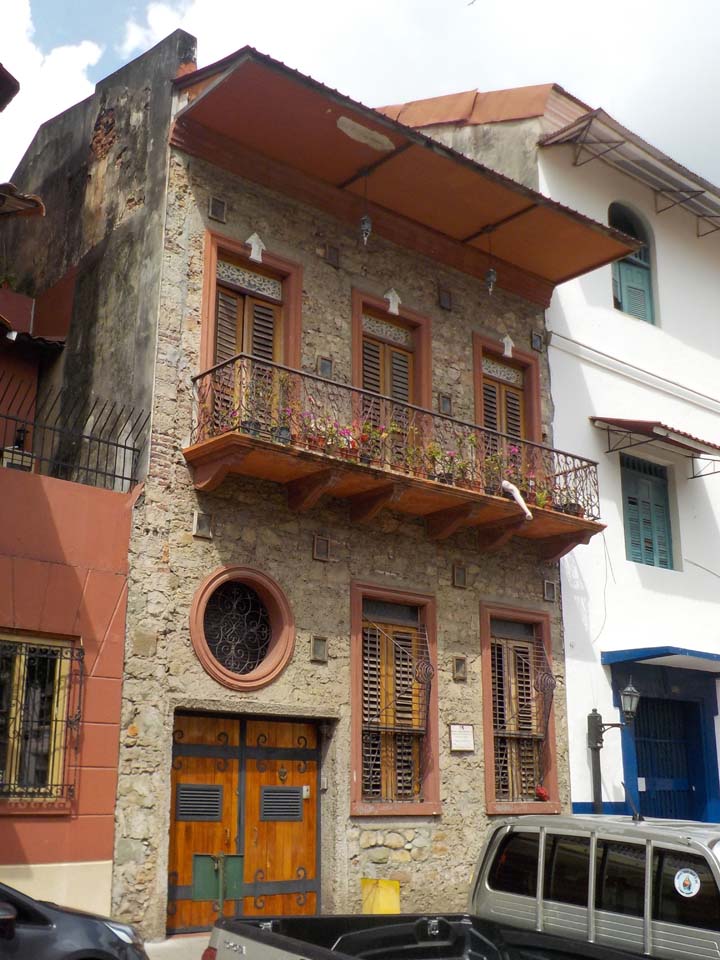
Restored French architecture
Paseo Esteban Huertos a/k/a Paseo las Bovedas, at the southern tip of Casco Viejo, is a walkway running along the top of the original seawall built by the Spanish. Here we enjoyed views of the financial district skyline to the east and the Amador Causeway and Puente de las Americas (Bridge of the Americas) to the west. The paseo was cooled by a refreshing ocean breeze and lined by indigenous Kuna vendors selling their handicrafts.
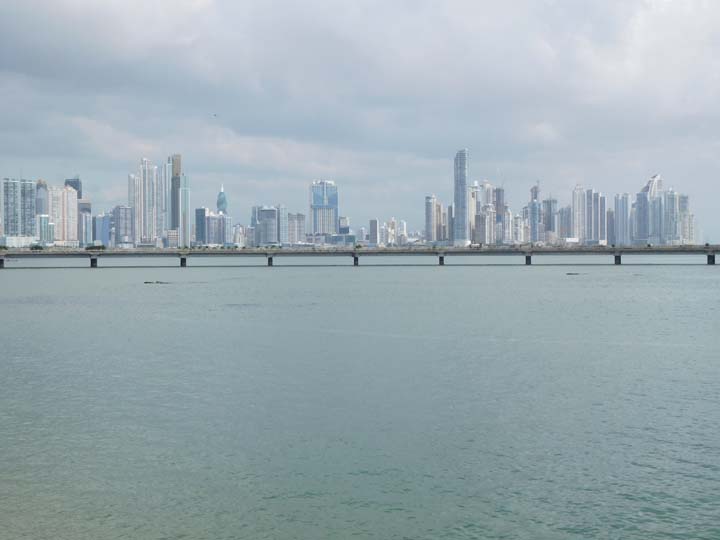
Financial district from Paseo Estaban Huertos
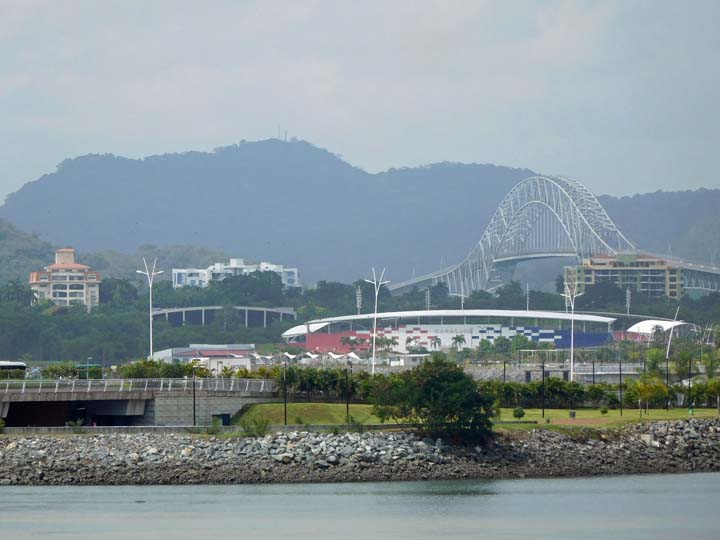
Bridge of the Americas
The Plaza de Francia lies at one end of the paseo and is dedicated to the memory of the approximately 22,000 workers who perished during the French attempt to build the Panama Canal from 1881 through 1889, mostly from mosquito-borne diseases like malaria and yellow fever. A further 5,609 deaths were recorded during the U.S. construction period from 1904 through the canal's completion in 1914. The canal is 48 miles long, so that's about 575 deaths per mile. Wow.
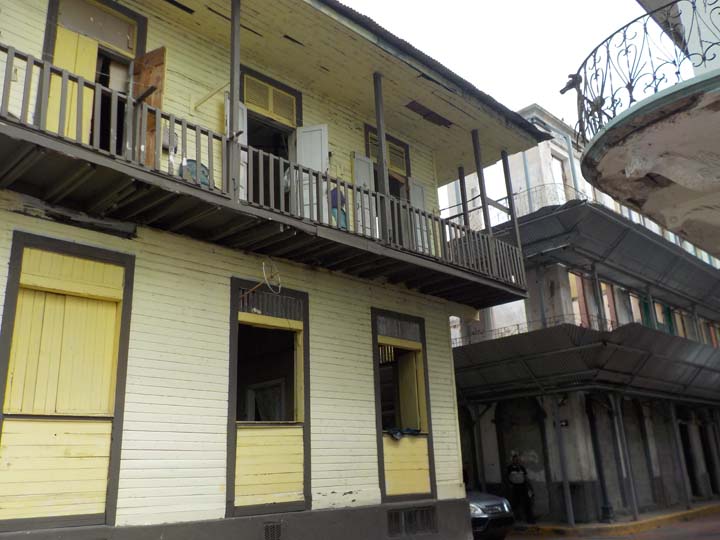
Casco Viejo balconies, very French
Iglesia San Jose's main attraction is the Altar de Oro (Golden Altar). The altar is constructed from mahogany covered in gold leaf and, according to legend, is the sole item of importance saved during the 1671 invasion by Henry Morgan. The legend also contends that to protect the golden altar, a priest painted it black, told Morgan it had already been stolen by another pirate, and even got him to make a large donation toward its replacement. Ha!
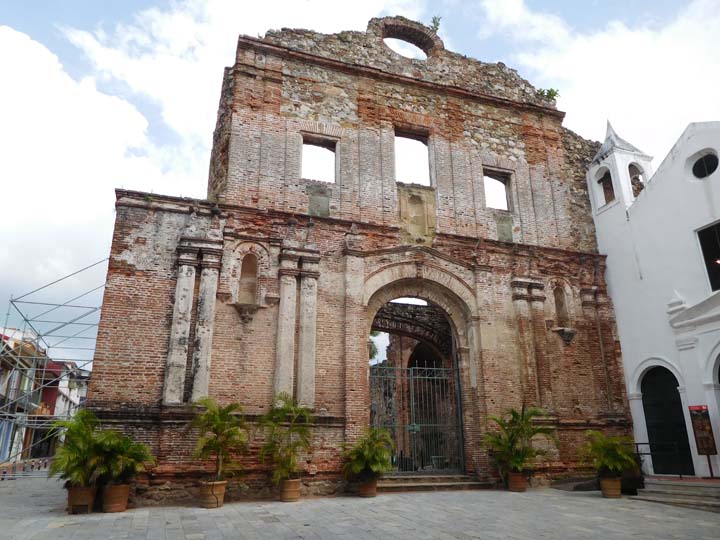
Convento de Santo Domingo
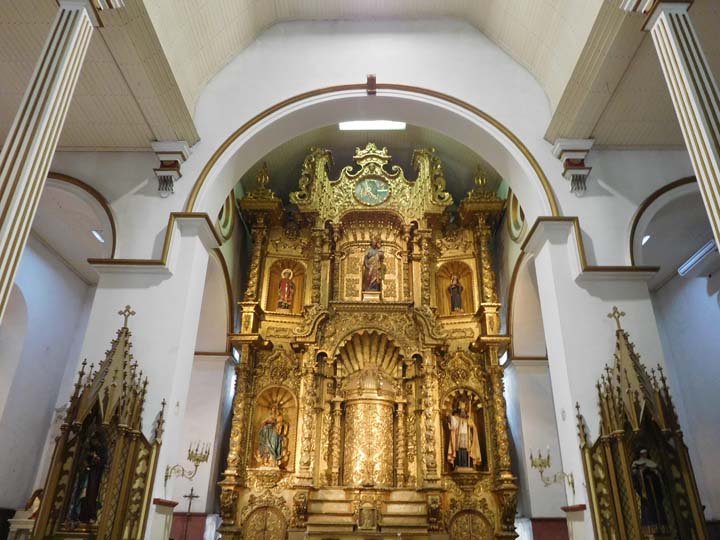
Altar de Oro, Iglesia San Jose
After checking out the altar, we paid a quarter to light an electric candle and made a wish; then we followed the sound of music down a side corridor to a room where we found an extensive and intricate diorama of the nativity and life of Jesus. Definitely worth seeing. Entrance to the Iglesia San Jose is free, but we made a small donation.
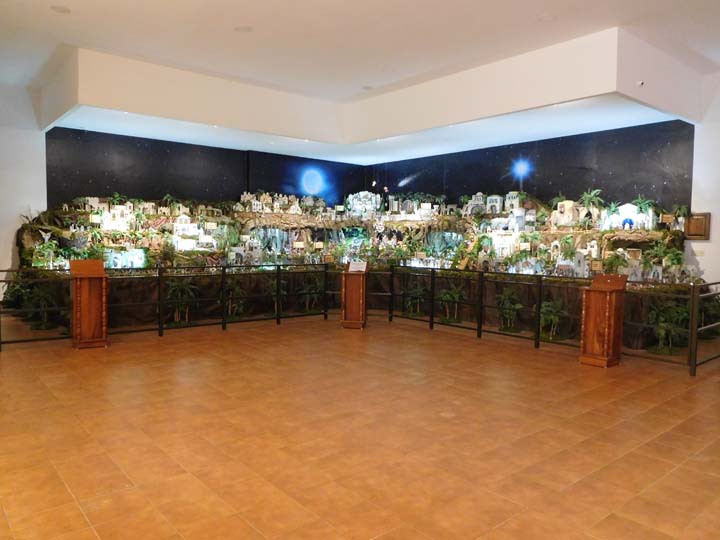
Diorama of the life of Jesus
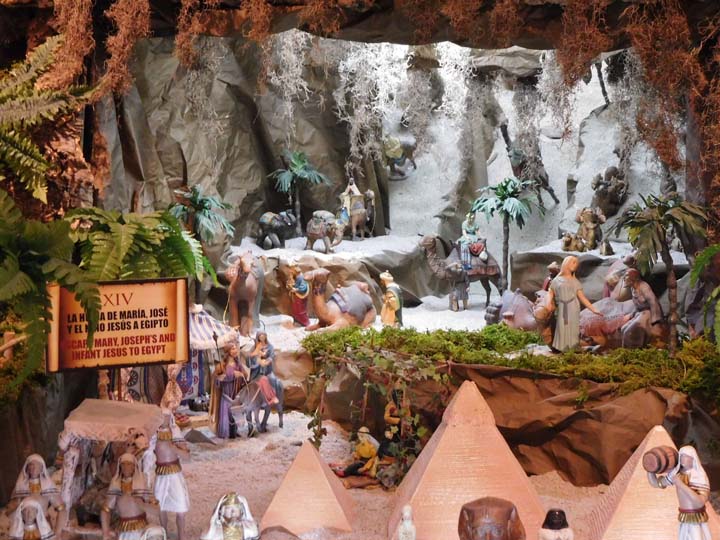
Infant Jesus...
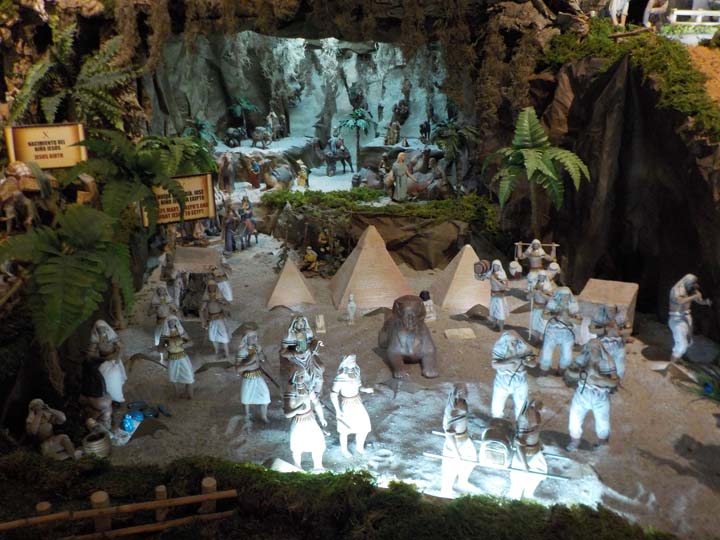
...in Egypt
After our walk, we returned to the hotel to cool off for a while. The temperature was about 90 degrees outside, and we were melting. It sure beats the winter temps at home!
In the afternoon we took a bus to Colon, on the country's north coast, in order to catch a ride on the historic Panama Railway, linking the Atlantic and Pacific Oceans. The train runs only once a day in each direction, leaving Panama City at 7:15 a.m. and returning from Colon at 5:15 p.m. We didn't want to get up super early, so we decided to take it north to south.
This time we summoned an Uber, having now gotten my account switched over to my new local phone number. It cost $5.88 from our hotel to the Albrook Mall Bus Terminal. We used Uber several times in Panama City, and each time the cost was one-third to one-half of what a taxi would charge, plus we didn't have to haggle, and the Uber vehicles were much better quality.
We got to Albrook right at 2:00, giving us just enough time to determine the correct bus platform, buy a Rapipass to let us through the turnstile, and grab some take-out sandwiches from Dunkin Donuts before catching the 2:30 bus to Colon. The Rapipass costs $2 for the pass plus a minimum $1 credit and is the only way to pay the 10 cent fare to go through the turnstile to the bus platforms. I had to show my passport to buy the Rapipass, which didn't even surprise me at this point. The bus to Colon cost $3.15 each, with the tickets purchased on board. The trip took an hour and 40 minutes, arriving at 4:10.
From the bus station in Colon, we opted to take a taxi the maybe half kilometer over to the train station. Colon is supposed to be pretty dangerous, and it's not advised to walk. The taxi was $1 each. We waited around at the station with some other tourists for a bit, then boarded the train at 4:35 for the 5:15 departure to Panama City. Tickets are purchased on board and include a little box of snacks and a cup of coffee. Remarkably, the $25 train fare is the same as when the railroad first opened in 1855!
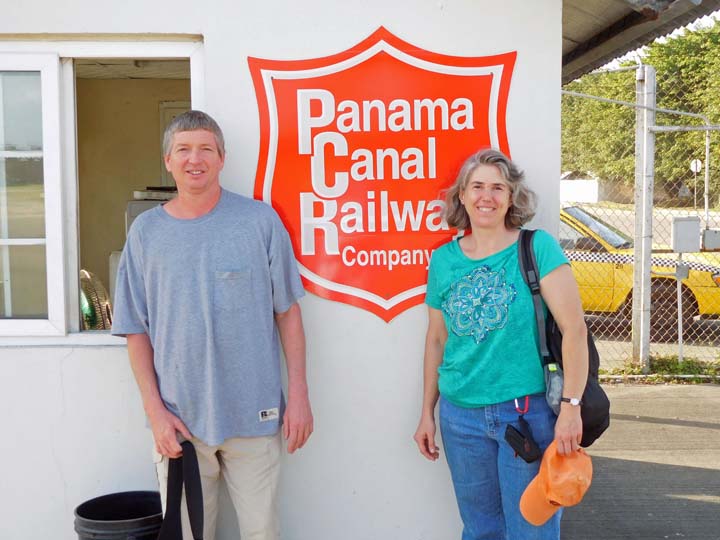
Tom and Jana - Coast to coast in only an hour!
When the railroad was completed in 1855, it was inundated by California Gold Rushers who traveled by boat from the U.S east coast, crossed the continent via this train, and then boarded another boat to travel up the west coast to San Francisco. This saved weeks and was much safer than crossing through Indian territory to California. This was the best way to travel between U.S. coasts until the Panama Canal was completed in 1914.
Creepy fact: Anywhere from 5,000 to 12,000 workers are estimated to have died during the construction of the railroad, though no official count was kept. Disposing of the dead became such a problem that the railroad started pickling the bodies in barrels and selling them to medical schools. The money from the sale of the bodies was then used to build a hospital.
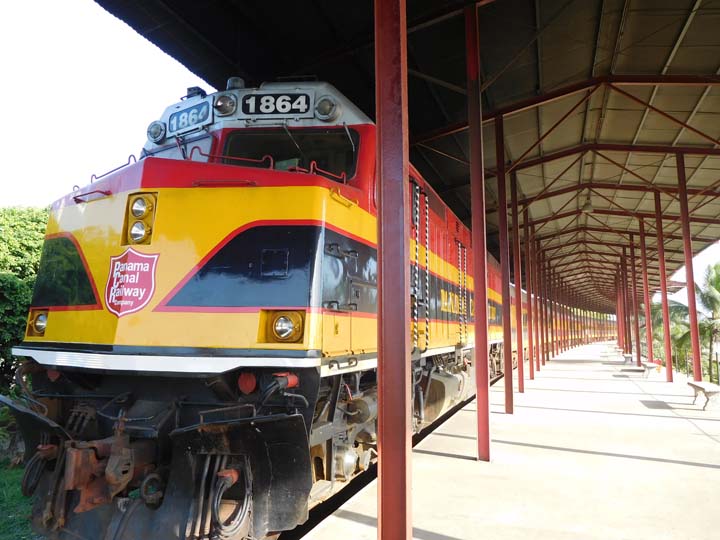
All aboard!
On boarding the train, we found seats in the dome car, but as soon as the train was underway, we moved to one of the open-air platforms between the cars for the duration of the trip.
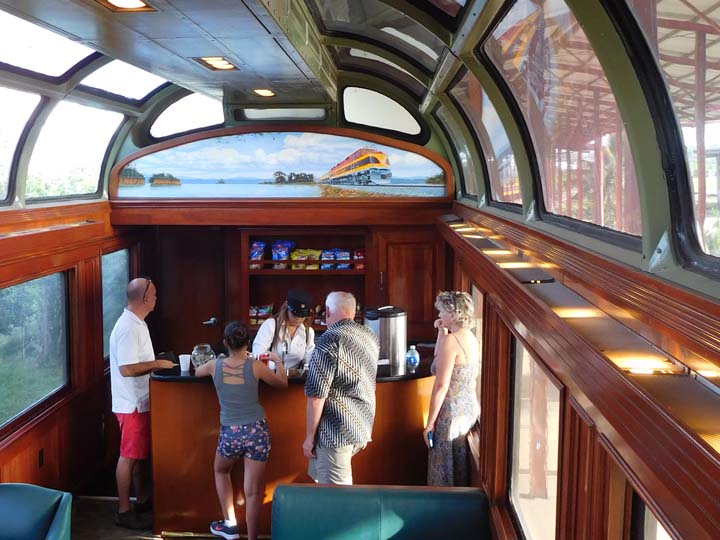
Dome car bar
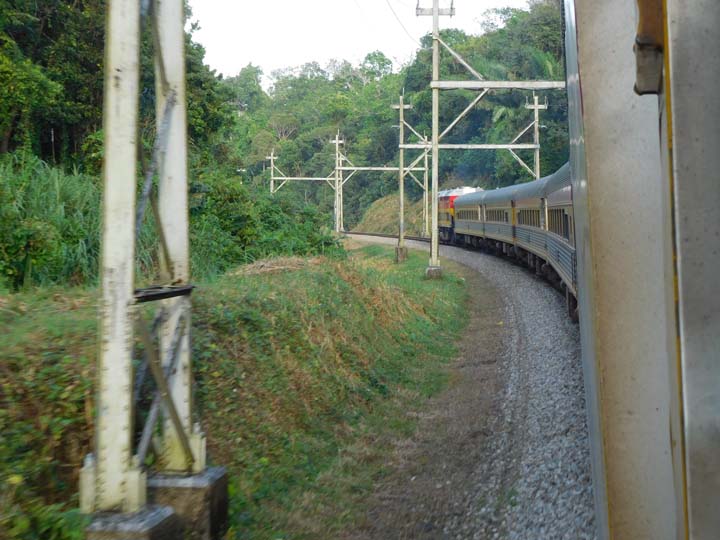
Through the jungle
The railroad runs parallel to the canal and was vital to its construction. We traveled through the jungle, along Lake Gatun, and past the historic Culebra Cut through the continental divide. It seemed like we were moving really fast, and in fact we traveled from coast to coast in only an hour!
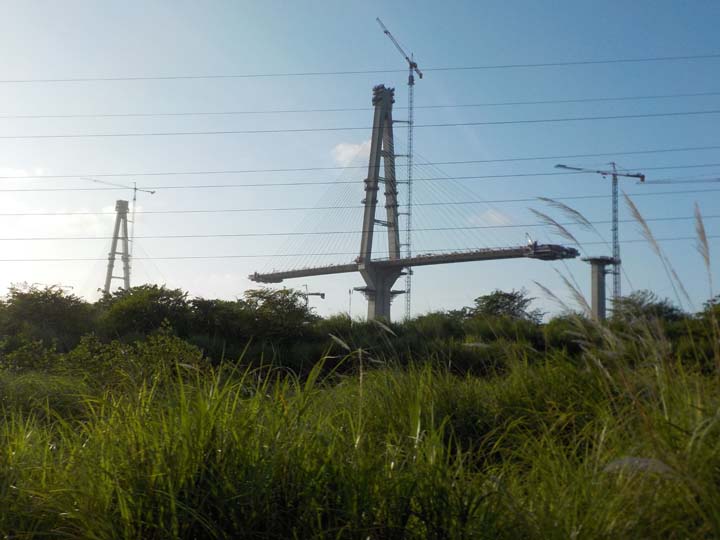
Bridge over the canal, under construction
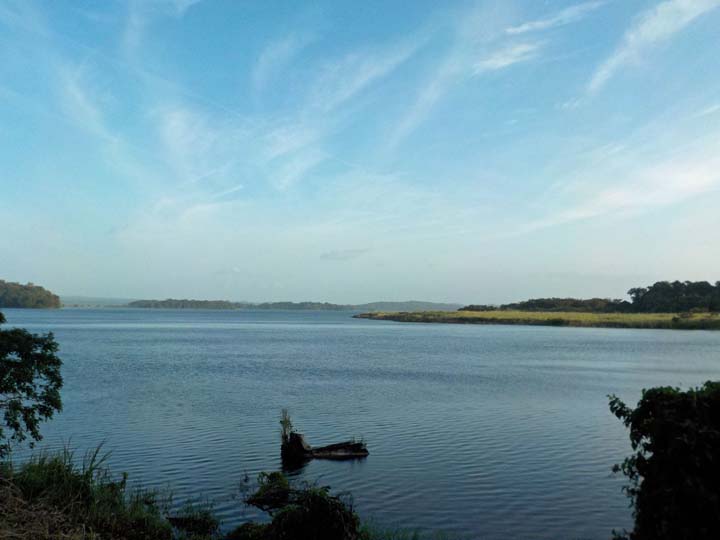
Gatun Lake
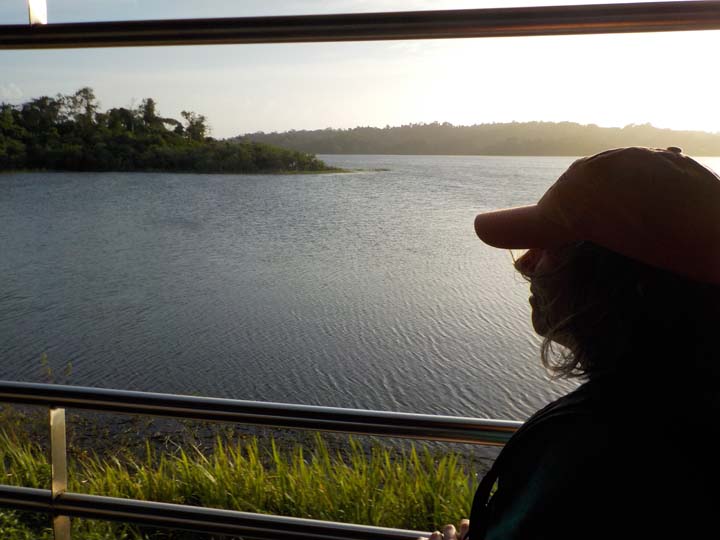
Jana on the open-air platform
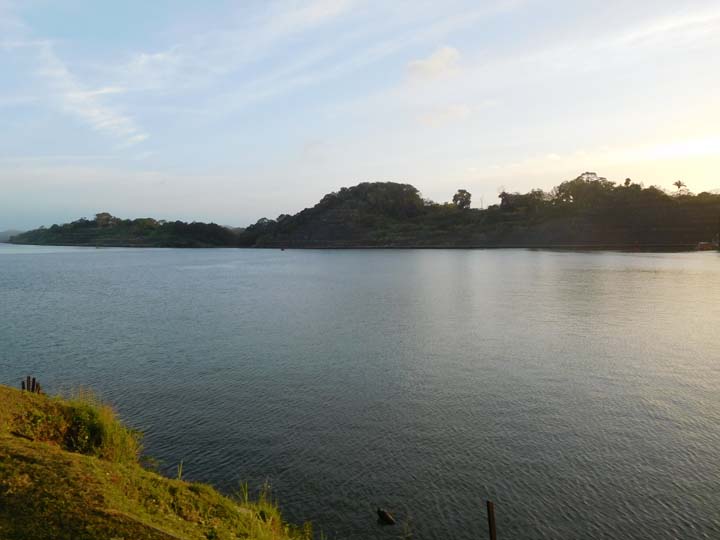
Culebra Cut
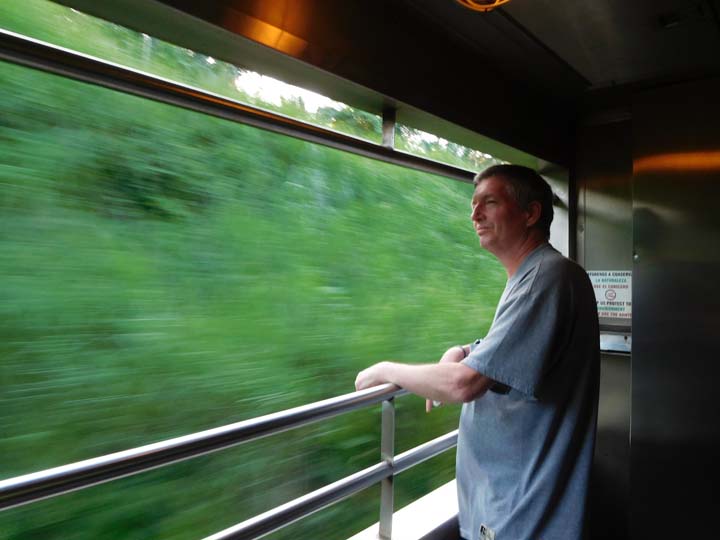
Tom travels too fast!
The train arrived at the Panama City station at 6:15. We ordered an Uber, and our driver Abdiel arrived four minutes later. It was rush hour, so it took 45 minutes to the hotel, yet it cost only $6.23. What a deal.
We ate dinner two doors down from our hotel at the Nomada Eatery, paninis and a couple of beers. The food was good and the beer was at least cold. We dined outside in the extremely pleasant weather. After dinner we went up to the rooftop terrace at the hotel, further enjoying the nice weather and the city view.
Tom
Goetz's Homepage
|



















